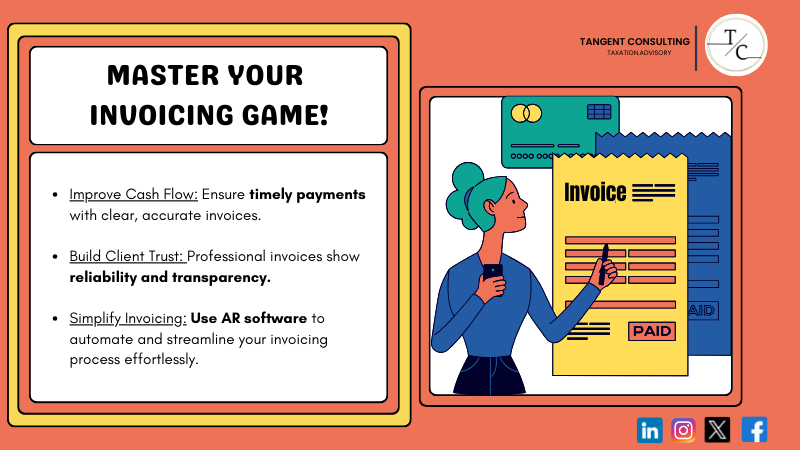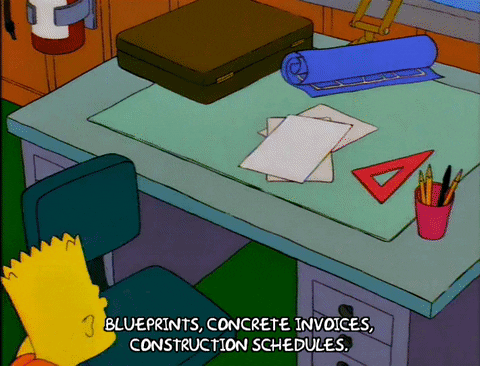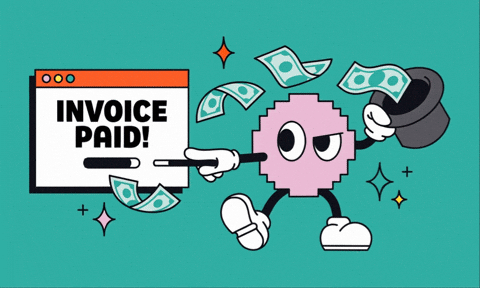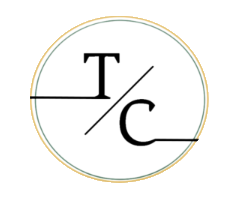You Can Thank Us Later – 10 Types of Invoices for Home Services Businesses
You Can Thank Us Later – 10 Types of Invoices for Home Services Businesses

It’s Friday again, and we hope your day is not going as chaotic as ours. If you are having a chaotic day and one of your clients has sent you an email saying, “Can you resend the invoice? I can’t seem to understand it”, then let’s lighten your mood up (and ours too).
As a home service business owner, you need to know that there are different types of invoices you can send to your clients. Each has a specific definition, and knowing about it can make your business operations a lot easier.
So, let’s talk about the 10 types of invoices every home services business owner needs to know.

Invoice Explained in Less Than 200 Words
Did you know that 60% of small businesses struggle with cash flow problems? The simple answer for this is it happens because of invoices.
So, what exactly is an invoice? It’s a document you send to a client after completing a service. It mentions the work you did, costs, and payment terms. It’s a polite (but firm) request for payment and acts as a bridge between the work you’ve done and the money you’re owed.
For example, let’s say you’re a plumber, and you’ve just fixed a client’s leaking faucet. An invoice for this job might include:
- Service provided: Faucet repair
- Materials used: New washers, sealant
- Labor cost: $150
- Due date: 15 days from invoice date
Fun fact: Invoices date back to 5000 B.C. Merchants in Mesopotamia used to have stone invoices.

10 Types of Invoices
Invoices are like tools in your toolbox, and each one has a specific purpose. If you don’t use the right type, you can have cash flow problems.
So, let’s break down 10 types of invoices you need to know about.
1. Standard Invoice
This is the most common type of invoice for home service businesses and is universally recognized. It mentions the services provided, total cost, and payment terms.
The standard invoice is perfect for one-off jobs where the work is straightforward, like mowing a lawn or cleaning a single home. Once the job is done, you issue this invoice to request payment.
Let’s say you’re a landscaper and have completed a garden makeover; your invoice would mention:
- Service provided:
- Materials used:
- Labor cost:
- Total due:
- Payment terms:
Pro Tip: Keep your standard invoice template clean and professional. Include your logo and payment options to make it easy for your clients to pay quickly.

2. Pro forma Invoice
A pro forma invoice is a preliminary invoice sent before the job begins, giving your client an estimate of the costs they can expect.
Pro forma invoices are perfect for larger or custom jobs where clients need an upfront idea of costs. For instance, if you’re an HVAC technician, your pro forma invoice would include:
- Proposed services:
- Estimated materials:
- Estimated labor cost:
- Total estimated cost:
It’s important to note that a pro forma invoice isn’t a final bill; it’s a draft that can be adjusted once you have completed the job.
3. Recurring Invoice
A recurring invoice is used for services you provide on a regular schedule, such as weekly lawn maintenance or monthly pool cleaning. Instead of creating a new invoice every time, a recurring invoice automatically reminds your client (and you!) when the payment is due.
Recurring invoices are ideal when you have long-term clients who require ongoing services. For example, if you’re a pool cleaner offering weekly maintenance, your recurring invoice would look like:
- Service provided:
- Frequency:
- Total per visit:
- Payment terms:

4. Credit Invoice
A credit invoice, also known as a credit memo, is issued to adjust or reduce the amount a client owes, often due to refunds, discounts, or billing errors.
You send a credit invoice when you need to correct an overcharge, issue a partial refund, or apply a discount to a client’s bill. For instance, if you’re an electrician who initially charged a client $400, and after reviewing, you realize the actual cost should be $350. Your credit invoice might include:
- Original invoice total:
- Adjustment:
- New total due:
5. Debit Invoice
A debit invoice, or debit memo, is the opposite of a credit invoice. It is issued when you need to increase the amount a client owes. This could happen due to additional services, unforeseen costs, or a billing adjustment.
Debit invoices are useful when you realize that extra work or materials are needed for a project. Your debit invoice might include:
- Original invoice total:
- Additional service:
- New total due:

6. Interim Invoice
An interim invoice is for larger projects that take weeks or months. It allows you to bill your client in smaller, manageable parts. It ensures a steady cash flow without waiting for the project to be completed.
For instance, if you are building a deck for a client, a project is estimated at $10,000. You and the client would agree on billing in three phases:
- Phase 1: $3,000 upfront
- Phase 2: $5,000 midway
- Phase 3: $2,000 upon completion
For Phase 2, you’d send an interim invoice that includes:
- Project name:
- Milestone:
- Amount due:
7. Retainer Invoice
A retainer invoice is used to collect upfront payment for services that will be provided over time. Retainer invoices are perfect for ongoing or as-needed services, such as monthly home maintenance. They’re typically issued at the start of an engagement or a service period.
For instance, a handyman who charges $500 monthly and covers up to 10 hours of work would issue a retainer invoice like this:
- Service provided: up to 10 hours
- Period covered: November 1–November 30
- Total due: $500

8. Collective Invoice
A collective invoice consolidates multiple smaller jobs or services into a single invoice. Instead of issuing several invoices, you send one detailed document mentioning everything.
Collective invoices are ideal when you perform several services for the same client within a specific period, such as multiple plumbing fixes. It saves time and reduces the hassle of sending an invoice to the client every time.
If you’re a handyman who completed the following tasks for a client in one month, your collective invoice will look like:
- Service period:
- Itemized services:
- Total due:
9. Timesheet Invoice
A timesheet invoice tracks the time spent on a project or service and converts it into an invoice. This makes sure you’re compensated fairly for your work.
Timesheet invoices are perfect for jobs where hourly labor is the primary cost, such as repairs or consultations.
A timesheet invoice would look like:
- Job description:
- Hours worked:
- Hourly rate:
- Total due:

10. Final Invoice
The final invoice is the last document you send to your client after completing a project. It summarizes all the work done, payments made, and the remaining balance.
Final invoices are sent at the end of a project or service, particularly for larger jobs where interim or partial payments were made along the way. Your final invoice might include:
- Project name:
- Total project cost:
- Payments received:
- Balance due:
Fun Fact: People respond better to invoices with a “thank you” note, making them more likely to pay on time.
How to Manage Your Invoices?
At Tangent, we prioritize organization. Whether it’s about managing receipts or financial statements, we like to stay in order. The good news is that you can adapt a similar strategy with invoices like a pro. Here’s how:
- Invest in tools like QuickBooks or Jobber to automate invoicing. Automation saves time and reduces human error.
- Send invoices immediately after completing a job. The faster you send, the faster you get paid.
- Maintain a log of all invoices, including paid, unpaid, and overdue ones. This is helpful when the tax season comes.
- Personalize your invoices with your logo, contact details, and clear payment terms.
- Don’t hesitate to send polite reminders for overdue invoices.
Final Thoughts
So, there you have it! We hope your chaotic day is a bit better now (ours is). Invoices are an integral part of business finances, and knowing about all these different types of invoices can set you on the right track. Make invoices as part of your brand and add professionalism and client-friendliness.
Speaking of professionalism and client-friendliness, Tangent Consulting has years of experience as a business coach and CFO for home service businesses. With us, you don’t need to hire an accountant or business coach separately; you can get both in one place.
PS If you are reading this, it means you can have access to our free consultation for your HVAC business. Avail this for free today before we change our mind 😉
FAQs
How do I handle overdue invoices?
You can send a polite reminder with a clear due date. If that doesn’t work, consider reaching out by phone or email to discuss payment options.
How long should I keep invoice records?
You should keep records for at least 5-7 years for tax and legal purposes.
Can you invoice without a company?
Yes, you can invoice as an individual. You need to include your name, contact information, and a clear description of the services provided.
